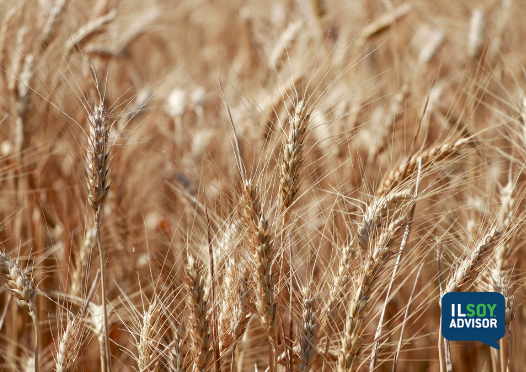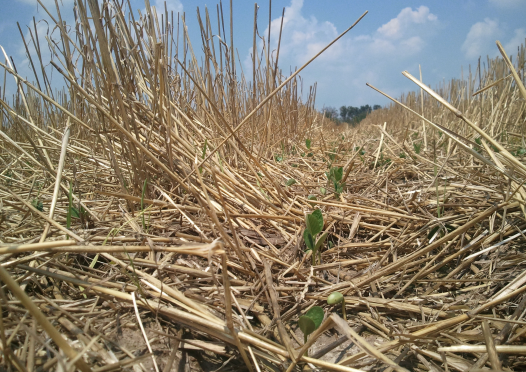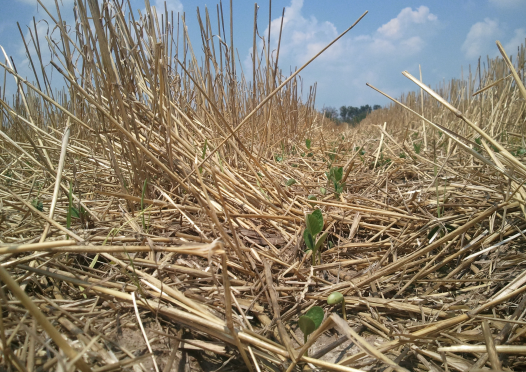ILSOYADVISOR POST
Agronomics: Agronomic Constraints That Limit Double Crop Soybeans
Many producers in southern Illinois double crop soybeans after wheat, creating an additional opportunity for revenue for the farm. In addition, planting soybeans adds living roots, supporting biological activity in the soil when growers would otherwise let the field lie fallow.
Producing double-crop soybeans is a challenge because you’re planting a crop outside its prime window, when weather is drier and hotter. And, there is always a risk that it won’t rain either at planting or later in the summer. This limits investment since there might not be a crop to harvest. This very mindset often limits double-crop soybeans’ yield potential.
However, in double cropping areas, growers have the season to produce a crop that can nearly rival full-season beans if the weather cooperates, so it pays to invest in the right agronomy.
Agronomists from states across the Midwest where double cropping is practiced met last April 11 at Wheat Soybean Double Crop Roundtable in St. Louis, sponsored by the Illinois Soybean Association with support from the United Soybean Board. We had an interesting discussion on double cropping and the challenges farmers face, as well as the opportunities in front of us.
One of the questions we asked and brainstormed over were the agronomic issues that agronomists recognized as limiting double-crop soybean yield. That list included:
- Low soil pH limits soybean yield
- Growers don’t buy a good variety, but instead chose cheap seed
- Variety selection and placement are not considered
- Grower don’t know how to select the right maturity for double crop
- Seed companies aren’t evaluating and selecting soybean varieties for double cropping
- The best phenotype is tall and bushy, quick growth, drought tolerant
- Seed treatments aren’t valued, but are as important for double crop as full season
- Seed rates are too low to optimize yield
- The best row spacing is 15” planted or 7.5” drilled
- Poor residue management and soil condition lead to poor seed-to-soil contact
- Growers do not fertilize and let the beans scavenge after wheat
- Lack of weed management leads to yield loss
- Disease pressure does impact yield
If you double crop soybeans, some of these issues may resonate with you as problems you deal with—or perhaps you have never even considered them as limiting yield in your double crop. Each of these issue has an obvious agronomic solution. Suggestion: Watch your double-crop beans this season and identify the top 3 to 5 issues. Then next season select practices to resolve those problems. Higher yield will be the end result.
The discussion wrapped up with these key messages to communicate to growers:
- Plant tall and bushy beans
- Harvest wheat on time and immediately plant soybeans
- Harvest wheat wet (17 to 18%) and dry with air
- Select soybeans that perform well in a double crop system
- Up the seeding rate and narrow the rows
- Manage residue properly
- Don’t drill, plant in 15-inch rows for a better stand
- Double crop soybeans can be profitable
- Management pays, treat double crop like you treat your full season beans
Agronomist Dr. Daniel Davidson posts blogs on agronomy-related topics. Feel free to contact him at djdavidson@agrwrite.com





Comments
Add new comment